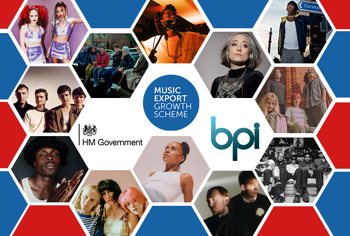As Record Store Day approaches, BPI’s Rob Crutchley looks at some of the statistics behind the LP sales boom
Record Store Day has rightly become a prominent event in the music calendar, and there can be little doubt that it has played a significant part in the remarkable increase in vinyl’s popularity in recent years. But while the story of the ‘vinyl revival’ is familiar territory now, there are actually relatively few statistics around to put that rise into context.
To recap some of the more oft-repeated figures: 4.1m vinyl LPs were sold in 2017, an increase of 26.8% on the previous year and the highest level of sales since the early 1990s. LPs accounted for one in every 15 albums purchased and comprised around a fifth of the total retail value of physical music - it’s an impressive turnaround in fortunes.
If anything is indicative of the format’s expanded appeal it’s that big albums that don’t get a vinyl release are in the minority now. Ed Sheeran topped virtually every chart in 2017 and the vinyl rundown was no exception: Divide sold well over 50,000 copies. Of the top 100 artist albums of 2017 78 were released on LP, but five years earlier in 2012 that figure was 44, while in 2007 only a third (33) were. According to the Official Charts Company over 36,000 titles sold at least one copy on LP in 2017 – in 2014 the figure was less than 20,000.
While the breadth of titles available is impressive Rock is undoubtedly the dominant genre sales-wise, accounting for almost two thirds of purchases in our yearly analysis. In recent years there has been a strong market for catalogue reissues and that continues, but new titles are claiming a growing share of sales and Liam Gallagher’s As You Were became the fastest-selling LP in 20 years when it was released in October.
So who’s buying all this highly desirable vinyl? According to Audiencenet some 6.4% of the population bought or were given a LP in the first six months of 2017, although that may include second-hand purchases and those from sources that aren’t measured in the Official Chart Company data. Kantar’s Worldpanel survey shows that men are in the majority of vinyl buyers, although not overwhelmingly so – women accounted for 39%. 45 to 54 year olds comprise the biggest single purchaser group but over 30% were aged under 35.
Of course, vinyl is still something of a niche concern in the grand scheme of things, representing 6.6% of trade income in 2017. But with Record Store Day growing in scale and popularity every year and LPs claiming supermarket floor space for the first time in many years there’s no denying the vibrancy of the market and that it’s finding new fans all the time.
For more facts, figures and analysis on the recorded music market, pick up a copy of BPI’s yearbook ‘All About The Music 2018’ here: http://www.bpi.co.uk/shop/
Record Store Day 2018 will take place on Saturday 21st April. It is the one day of the year when over 200 independent record shops all across the UK come together to celebrate their unique culture. Special vinyl releases are made exclusively for the day and many shops and cities host artist performances and events to mark the occasion.

4.1m vinyl LPs were sold in 2017, an increase of 26.8% on the previous year and the highest level of sales since the early 1990s. LPs accounted for one in every 15 albums purchased and comprised around a fifth of the total retail value of physical music - it’s an impressive turnaround in fortunes.




